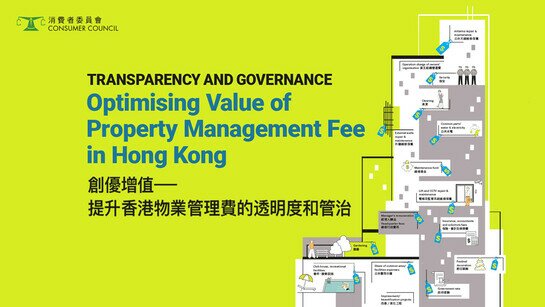It is common for parties seeking tenders to include in their tender documents a prohibition against bidders communicating with competitors in relation to bids; recognising the concern of parties seeking tenders that this form of conduct undermines the economic benefits which competitive bidding brings. The OECD characterises collusive conduct of this kind, as "hard core cartels" and "the most egregious violations of competition law that injures consumers in many countries" [1]
Bid rigging is therefore a serious matter. Bid rigging is one of the examples of business practices that the Hong Kong government has noted in its Statement on Competition Policy [2] as a matter that 'may warrant further attention' in terms of deciding whether the practice is not in the overall interest of Hong Kong. Moreover, the Prevention of Bribery Ordinance [3] makes it an offence for a person to offer an advantage to any other person as an inducement to withdraw a tender from a public body or refrain from making a tender, or procure the withdrawal from an auction to a public body. It could be expected that parties seeking tenders would therefore utilise whatever means are available to identify whether the practice is taking place, and find the means to prevent such practices from occurring.
The intention of this document is to outline a process which parties seeking tenders can follow to identify the practice, and thereby attempt to limit its occurrence. The document, and suggested procedures have been drawn largely from similar procedures and information disseminated by competition authorities in other countries that have general competition law that prohibits bid rigging [4].
1. ARE THERE INDUSTRY CHARACTERISTICS CONDUCIVE TO BID-RIGGING?
Certain industries appear more prone to bid-rigging than others. For example:
- those where the product or the service is fairly straight forward and not subject to significant technological change;
- those where price is the major determinant of the successful bidder rather than particular capabilities or methodologies;
- those dominated by a small number of large firms and where few, if any, new firms enter the market;
- those with active trade associations. Experience of competition authorities in jurisdictions with competition laws, indicates that trade associations have played a role in promoting this type of behaviour.
While these factors do not, in and of themselves, prove bid-rigging, they are indicators that fertile ground exists for such agreements or arrangements.
2. WHAT IS BID-RIGGING?
There are a number of identified forms or patterns that bid-rigging may take.
- Cover bidding occurs when the bid price of the firm chosen to win is exceeded by the bid prices submitted by the other firms that are party to the agreement, or when the other bids are made to contain special terms which make them unacceptable;
- Bid suppression is essentially the opposite of cover bidding. It involves one or more of the parties agreeing not to bid or to withdraw their bid thereby creating the false appearance of competition;
- Bid rotation is a systematic or random method by which the conspirators allocate tenders among themselves;
- Market allocation is an agreement among the bidders not to compete for certain customers or in certain geographic regions.
3. THE COSTS OF BID-RIGGING
There is little doubt that bid-rigging causes purchasers to pay far more than fair market value for goods and services.
Landmark court cases in the US and Canada against cartels in the supply of citric acid and vitamins have exposed substantially increased prices to the public, that have resulted in the prospect of those guilty having to pay civil damages to the customers they have cheated [5]. Past Australian cases in ready mixed concrete, freight forwarding services, and fire safety equipment installation maintenance services have indicated substantial costs to parties seeking tenders and have resulted in substantial damages actions [6].
4. HOW TO IDENTIFY BID RIGGING?
The party seeking tenders is in the best position to detect bid-rigging through observing a number of "warning signs". Any of the following tender results should cause a second look, as they may indicate bid-rigging:
- Bids come in higher than were forecast, with no apparent reason for the difference. For example, where bids exceed published price lists, engineering cost estimates, previous prices or some other base price;
- Firms who were expected to bid do not;
- Two or more bids are received which are highly similar or even identical;
- Certain companies always seem to submit the winning bids for certain contracts;
- A new or infrequent supplier bids and the results show a significant drop in the historic pricing structure from previous tendering exercises;
- The party seeking tenders becomes aware of tender related communications amongst what should be competing suppliers [7];
- Tenders by firms usually associated with subcontracting. Tenders that require sub-contracting arrangements can create an opportunity for firms to cover bids. For example, small suppliers unable to bid on the whole of the tender themselves, may agree to submit a high bid, or one with unacceptable conditions, as part of an arrangement with a selected winner. The selected winner then rewards the cover bidder or bidders with subcontracts.
5. THE IMPORTANCE OF RECORD KEEPING
While some of the above factors that have been identified as suspicious might appear consistent with competing markets, they may, when combined with other information, or when viewed together, be sufficient reason to initiate inquiries.
Where a legislative prohibition against bid-rigging applies, this could prompt 'whistle blowing' on the existence of the scheme [8]. However, this sort of exposure cannot be relied upon and it is more important to assist in identifying bid rigging through analysing patterns of bids, and establishing a pricing history for comparisons. Parties seeking tenders should therefore establish administrative procedures along the following lines, to assist in the process of identifying possible occurrences of bid-rigging.
- Maintaining historical data of prices
Maintain a record of unit prices for all bidders. This is important in conducting post-tender reviews and analyses, and creating a history of pricing for future comparison work. - Maintain records of tendering patterns
Document in detail whether any of the 'suspect occurrences' that are noted in section 4, above, have arisen. This could be done in the form of a checklist, against each of the suspect occurrences, for each tendering exercise. - Periodic Review
Periodic reviews of tenders should be conducted, because bid-rigging may not be evident from the results of a single tender or request for bids. Quite often a pattern of illegal behaviour is only revealed when one examines the tender results from a number of calls over an extended period of time.
6. REQUIRING PARTIES TO CERTIFY AN INDEPENDENT BID
A party seeking tenders should develop a generic certificate that bidding parties are be required to sign indicating that the bid had been prepared independently of other competitors. The certificate could deter bid-rigging by requiring bidders to disclose to the party seeking tender all material facts about any communications and arrangements they have entered into with competitors regarding the tender call. The certificate should have a clause invalidating the bid and either precluding the bidding party from making further bids or applying a penalty, if it is found that the bid was made in contravention of the certificate.
7. PREVENTION
It is difficult to generalize on preventive measures in relation to bid rigging, given the different circumstances that exist for diverse economic sectors. Moreover, different circumstances apply depending on whether the party seeking tenders is a public body, or is in the private sector. In some cases, preventive measures that are workable for one category of parties seeking tenders, might actually work against the interests of another category. Each preventive measure therefore has to be considered on its different merits.
Some examples of measures that parties seeking tenders can consider in an attempt to limit the extent to which they are exposed to bid rigging, and some qualifications to those measures are as follows:
- Numbers of bidders
It could be expected that the greater the number of bidders, the greater the instability of any agreement or arrangement and the more likely that competitive bids will be submitted.
Unless there are sound reasons to limit the number of bidders, parties seeking tenders should qualify as many bidders as possible. - Bidder lists
In some sectors it will be necessary to have lists of authorised bidders and to limit the making of offers to parties on the list. For example, to limit the making of offers from parties which have achieved certain standards.
However, for some sectors the use of bidder lists may create a climate that promotes agreements or arrangements between small numbers of market participants, or acts as a deterrent to new entry. - Compulsory participation in bidding lists
It is sometimes the practice for parties that maintain lists of authorised bidders to require those on the lists to submit bids in order to maintain their status, and achieve a high number of bids for any given project.
While there may be sound reasons for doing so, the party maintaining the list should be aware of the fact that in these circumstances some bids might not reflect authentic market conditions, and could therefore distort the pattern analysis described in section 5 of this document. - Disclosure of bidder lists
In some circumstances the disclosure of bidding lists might increase market intelligence on who may or may not be bidding, and therefore enhance the opportunity for or increase the longevity of a conspiracy. For example, by warning parties to an agreement when non-participants are being invited to bid.
On the other hand, for some parties that have over riding transparency obligations, such as public bodies, it would be more important for full disclosure of the bidder list. - Subcontractors
As noted in section 4 of this document, tenders that require sub-contracting arrangements can create an environment for firms to make cover bids. One measure that might be considered is building in a requirement that bidders must identify all potential subcontractors and provide their pricing. Such data would be useful when running pattern analyses aimed at identifying allocation schemes, e.g. by geographic area, client or market.
However, in some circumstances tendering parties might be either unaware of who they will eventually choose for sub contracting work, or are unwilling to identify potential subcontractors because of the need to protect their commercial interests in future negotiations with subcontractors.
1. Organization for Economic Cooperation and Development 'Recommendation of the Council - Concerning Effective Action Against Hard Core Cartels'. See http://www.usdoj.gov/atr/public/international/docs/hard_core.htm 。
2. Hong Kong Government 'Statement on Competition Policy' clause 6(b).
3. Sections 6 & 7, Prevention of Bribery Ordinance CAP 201.
4. For example, the Canadian Competition Bureau and the Australian Competition and Consumer Commission.
5. Speech by Assistant Attorney General Joel I Klein 'International Anti-Cartel Enforcement Conference' September 1999.
6. See for example, Trade Practices Commission v TNT Australia Pty Ltd (1995) ATPR 41-375, and Trade Practices Commission v Pioneer Concrete (Vic) Pty Ltd (1996) ATPR 41-457.
7. For example, parties to a bid rigging agreement might make a mistake in sending out information. In one Canadian case information on a tender bid that was originally supposed to go to a competitor informing it of the bid, was inadvertently sent to the party seeking tender along with the tender price. This immediately raised a suspicion as to why a firm would want to inform its competitor of the tender bid.
8. For example, leniency programs initiated by the Antitrust Division of the US Dept of Justice, have been noted as an important reason behind the Division's success in identifying price fixing by firms, who "reveal their own wrong doing and that of their co-conspirators". See Op Cit speech by Joel I Klein.











